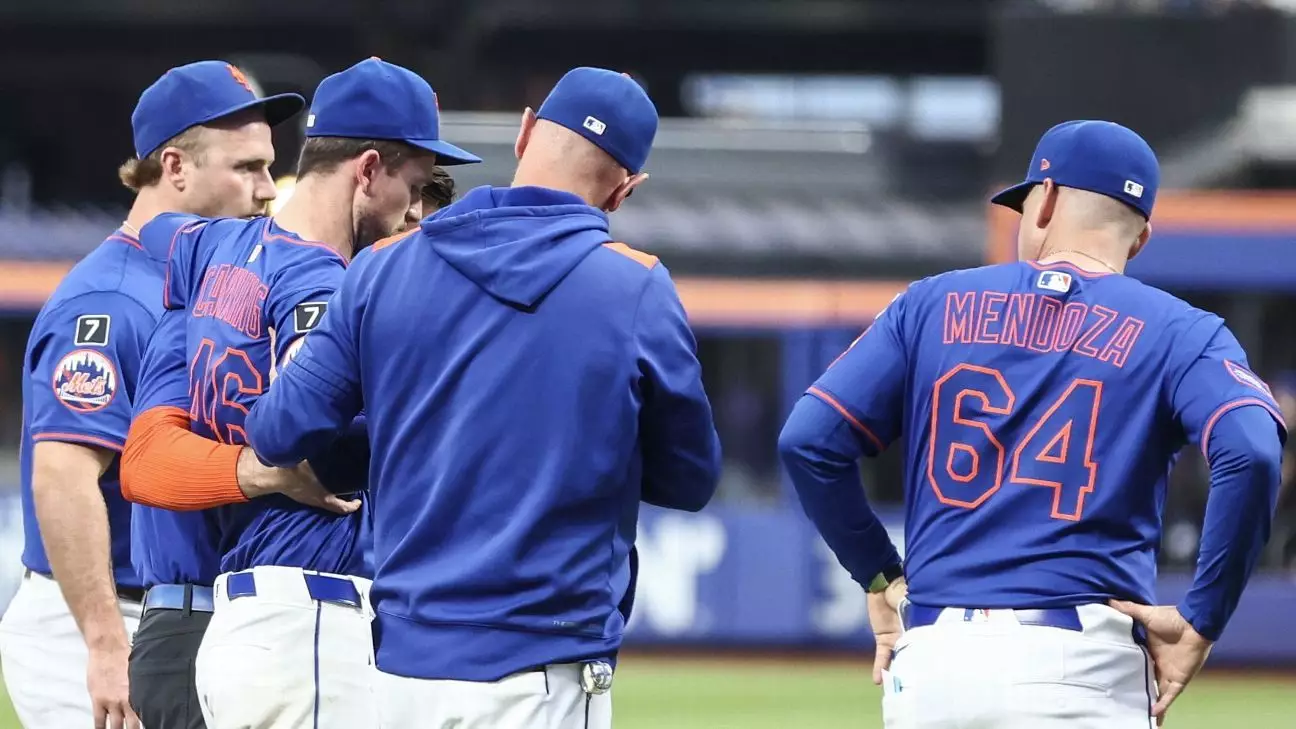The New York Mets have been beset by a relentless string of injuries that critically undermine their chances during a pivotal phase of the MLB season. The latest blow came on a Thursday night when right-hander Griffin Canning appeared to suffer a serious Achilles injury, abruptly ending his outing against the Atlanta Braves. This development deepens an already significant pitching crisis, as Canning becomes the third starting pitcher from the Mets’ Opening Day rotation to be sidelined with notable injuries in recent weeks.
What makes this situation particularly alarming is the timing and nature of the injuries. Canning’s noncontact injury—sustained during a routine defensive play—highlights the fragile state of the Mets’ pitching corps. His abrupt collapse and visible pain sent immediate ripples through the team and fans alike, underscoring how thinly stretched the Mets are in terms of frontline pitching depth.
A Collection of Setbacks Compounding Pressure
The Mets’ woes did not begin with Canning. Starters Kodai Senga and Tylor Megill have already been lost to a right hamstring strain and a right elbow sprain, respectively. Add to this the setback suffered by Sean Manaea—a left-hander expected to bolster the rotation after an oblique injury—who was diagnosed with a bone chip in his elbow during a rehab assignment. Even with their best intentions to return Manaea to health, these layers of injury create a precarious scenario for the pitching staff.
In contrast, the offense and bullpen are working overtime to pick up the slack, but baseball is fundamentally a game where starting pitching drives consistent success over the long haul. Losing three starting pitchers in quick succession leaves the Mets vulnerable to pitching instability and forces management to scramble for alternatives.
Griffin Canning: A Beacon Amidst Chaos
Before the injury, Griffin Canning provided a flicker of hope in an otherwise stormy Mets rotation. After a challenging previous season with the Angels, where he posted a 5.19 ERA and a losing record, Canning turned his performance around with the Mets. At 7-3 with a respectable 3.77 ERA in 16 starts, he was emerging as a reliable, consistent arm—a stabilizing force amid uncertainty.
His injury is not just a physical setback for the team—it is a psychological blow. Pitchers like Canning, quietly steady and effective, often serve as the backbone during difficult stretches. Losing him doesn’t just reduce the number of arms available; it steals confidence and momentum.
The Broader Implications and Future Prospects
The Mets’ current injury crisis exposes critical vulnerabilities in their roster construction and perhaps their medical and conditioning protocols. While random injuries are inevitable in professional sports, the clustering of key injuries in the rotation might suggest a need for re-evaluation in how pitchers are managed and prepared.
From a strategic standpoint, the Mets now face urgent decisions about balancing short-term competitiveness and long-term player health. The return of Frankie Montas offers some respite, yet relying heavily on pitchers coming off injuries carries risks. Moreover, the abrupt emergence of bullpen arms like Austin Warren as emergency starters is not a sustainable strategy, especially against consistently strong offensive teams in the National League East.
Mets management may be forced to explore trade options, hasten the development of minor-league pitchers, or even consider unconventional player usage to navigate this crunch period. Regardless, these injuries compel the organization to be nimble and resilient—qualities long touted but never more vital than now.
The Emotional Toll on the Team
Beyond the physical and tactical complications, injuries such as Canning’s exert a heavy emotional toll on teammates and staff. Players like Pete Alonso, who openly expressed empathy and frustration with the situation, highlight how such losses resonate deeply within the clubhouse. Seeing a teammate “wince in pain” and requiring assistance to leave the field is a sharp reminder of the fragility inherent in the game.
Injuries erode not only personnel availability but also morale. The challenge for the Mets will be harnessing collective resolve to overcome adversity rather than succumb to mounting setbacks. That mental resilience, often overlooked, may ultimately determine whether the team can still contend or if this string of misfortunes derails their season entirely.


Leave a Reply